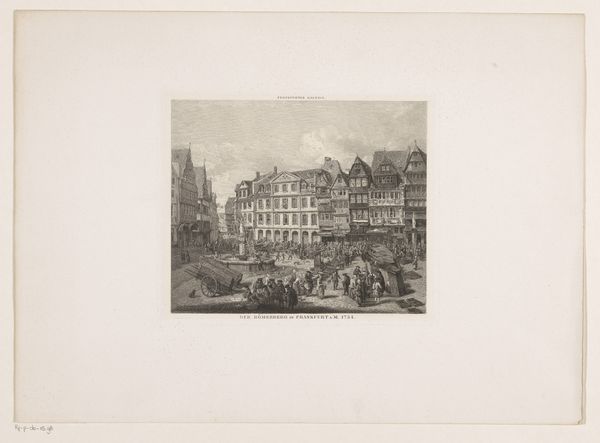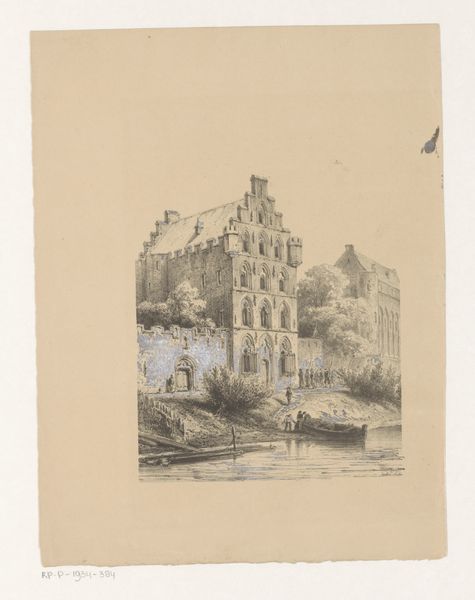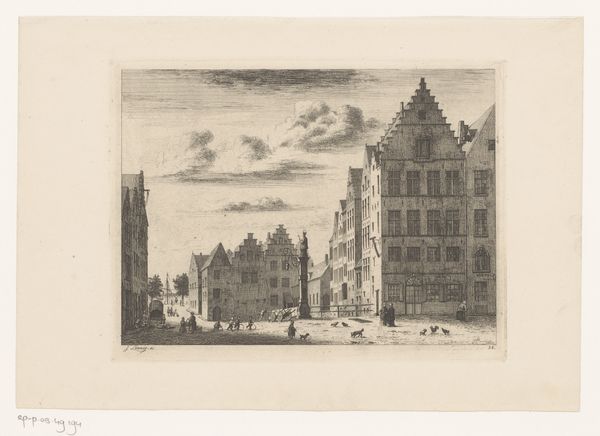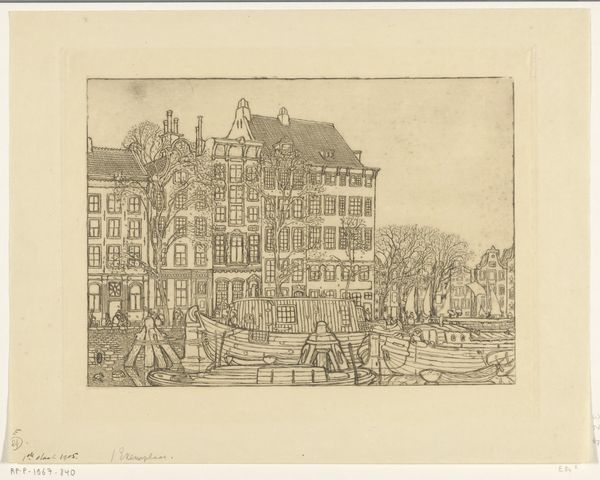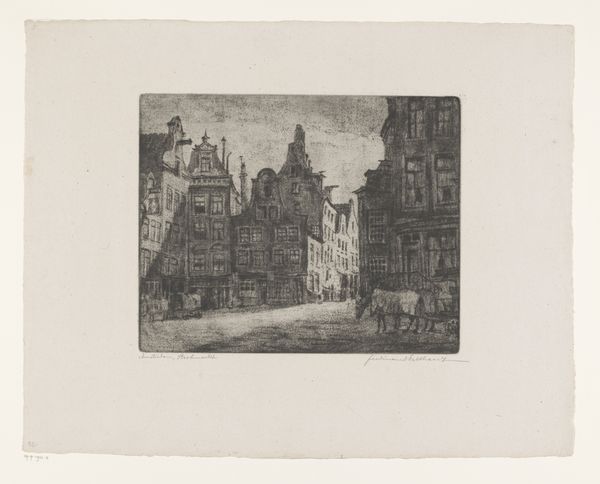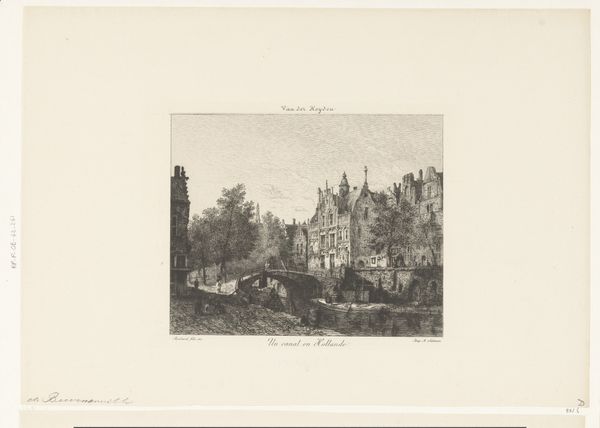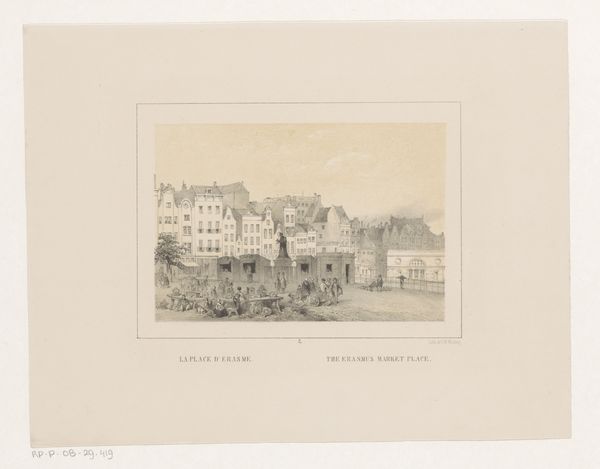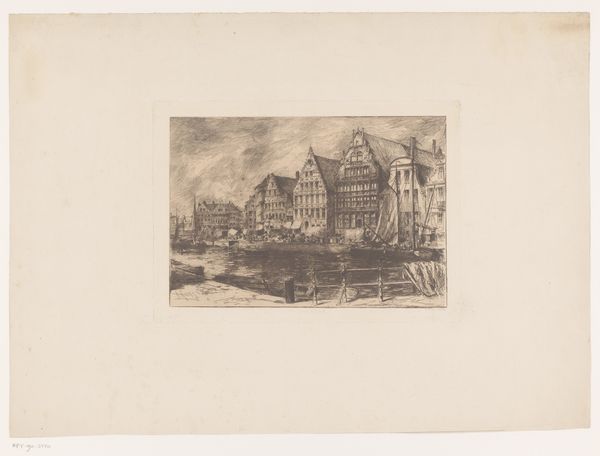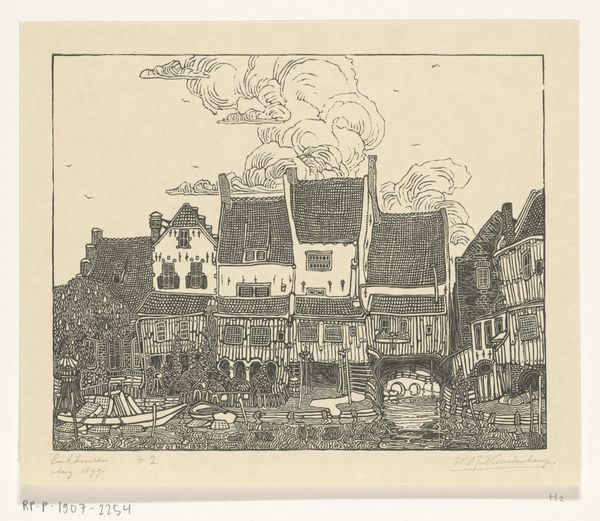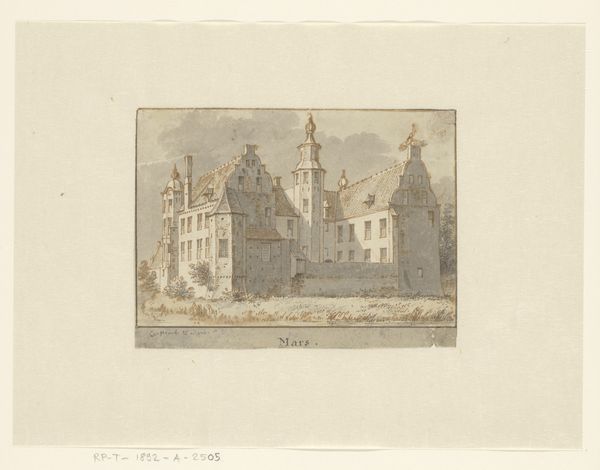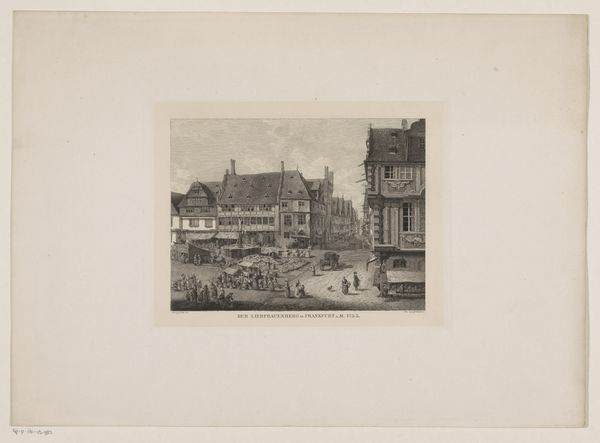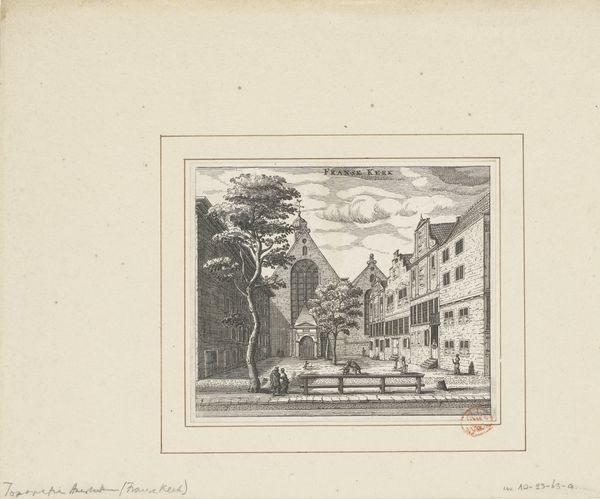
Prinsengracht ter hoogte van de Brouwersgracht in Amsterdam 1902 - 1908
0:00
0:00
Dimensions: height 237 mm, width 318 mm
Copyright: Rijks Museum: Open Domain
Curator: This is Wijnand Otto Jan Nieuwenkamp’s "Prinsengracht ter hoogte van de Brouwersgracht in Amsterdam," an etching probably made between 1902 and 1908. Editor: It's…dense. A tightly packed cityscape. You can almost feel the weight of those buildings bearing down. The starkness of the lines in this medium certainly contributes to that feeling, wouldn't you agree? Curator: Absolutely. The etching technique lends itself to precisely this kind of urban documentation that was popular during that period. Consider how prints like these circulated, shaping perceptions of Amsterdam and Dutch identity at large. Editor: It's amazing what one can accomplish with so simple medium: lines scratched into a metal plate. Look how he varies the density to suggest shadow, texture… the materiality itself speaks volumes about labor and artistic production. Curator: And it speaks to its time as well. This etching offers a fascinating glimpse into the urban planning and architectural styles of early 20th-century Amsterdam. The detailed rendering provides historians invaluable visual documentation, you see. Editor: Exactly! Think about who would have commissioned something like this – who had access? How was the urban space represented in relationship to the means of printing the image? And consider those anonymous figures populating the canals – the silent workforce shaping the city... Curator: The relationship between private wealth and public presentation of this imagery would be an avenue worth pursuing, definitely! Editor: It really urges one to think critically about not just the ‘what’ but the ‘how’ and ‘why’ of visual representation, in his work. Curator: Indeed. This piece illustrates how art history merges seamlessly with social history. The cityscape as not just representation, but cultural artifact and an active element within historical discourse. Editor: Looking closer makes you consider the labor invested here, while looking afar helps reflect how class might've impacted art and architectural preferences. Fascinating contrast to hold in the same view!
Comments
No comments
Be the first to comment and join the conversation on the ultimate creative platform.
